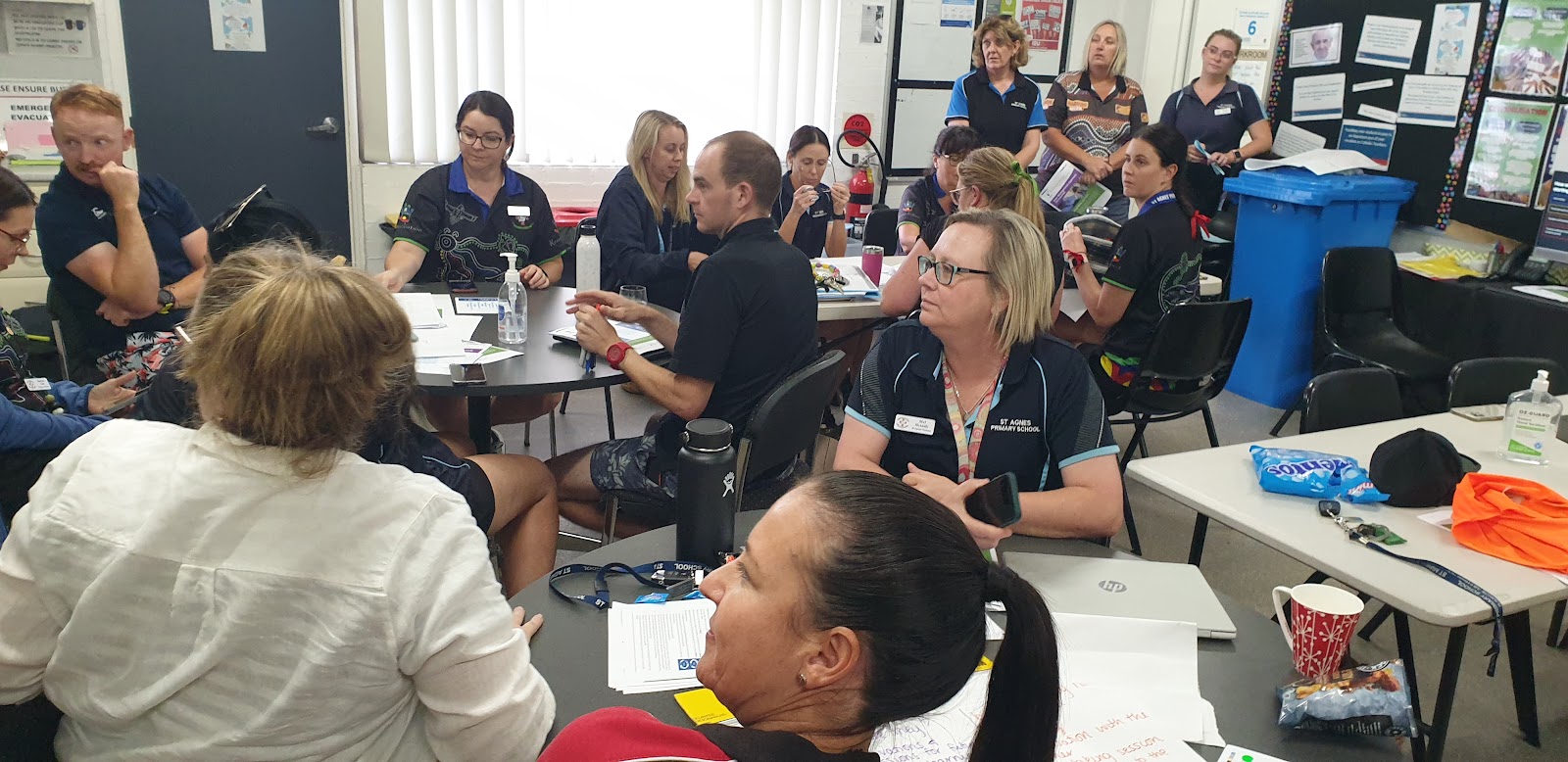Sharing our first Learning Fair
This was an opportunity for all participants (teachers, students) to share, reflect and especially celebrate their cohort or school improvement accomplishments (in this case in the area of writing) and their shared work as communities of learners. Lyn talks about 'Learning Fairs' as ways schools can share their learning with other schools in the Diocese. We adopted this approach as a strategy for our own students!
Groups of children were invited to prepare a “storefront” that showcased their literacy work within a country study. A storefront is a visual representation of the learning that has emerged from the writing work.
Students included books, photos, flags, artefacts, language translation posters, interactive audience question and answer cards, samples of food, slideshows, maps, boarding passes and any other selection of relevant resources to support their informative text which they had collaboratively written as a group.
Teachers began this process by examining their data to differentiate instruction. They knew more than one assessment would be needed to help plan the learning and teaching that followed. These assessments indicated what the mixed ability collaborative groups would look like. Students researched and used their informative writing skills to develop a series of informative texts that would serve to educate their audience about a country. Inviting parents to the sharing of this information gave the children purpose and context. Students were tasked with using prior knowledge, recent learning, and relevant skills. Teachers hoped they would be able to use the products created both formatively and summatively in the future.
It was important that teachers presented the Learning Intention and Success Criteria and explained the writing goals of the students to the visiting parents. Although Geography learning was integrated into the Learning Fair, it was important that both parents and students knew of the dual focus. The teachers had been challenged during the planning stages to ensure they remained true to each discipline. Although the learning cycle began with information reports, students learnt how to compose other informative texts along the way, often organically (and as a response to other teams) as a way to make their storefront more engaging. Including voice and choice was key to building student engagement and ownership.
Students were challenged to solve the problem of ensuring the information presented resulted in a more 'informed and educated' audience. After presenting their informative report, time was given for Q and A, there was the supply of take home brochures, teaching of cultural dances/games unique to their country and quizzes which allowed students to see 'in the moment' if they had been successful. Students and parents were then encouraged to circulate around the other storefronts. A final 'kahoot' with all students and parents about all the countries was held at the end which encouraged self-assessment around how much information was retained and could be confidently applied.


















Comments
Post a Comment